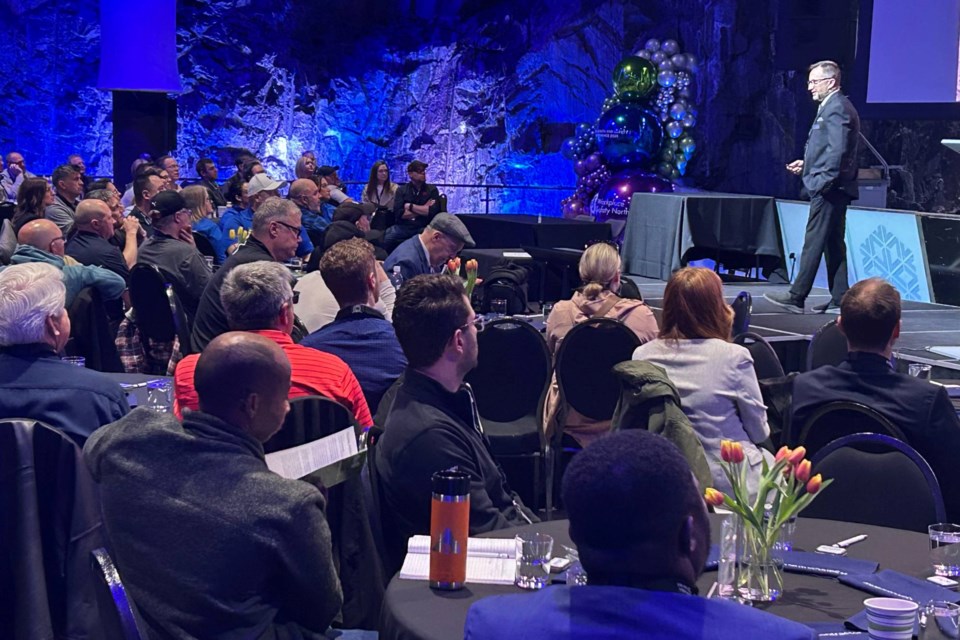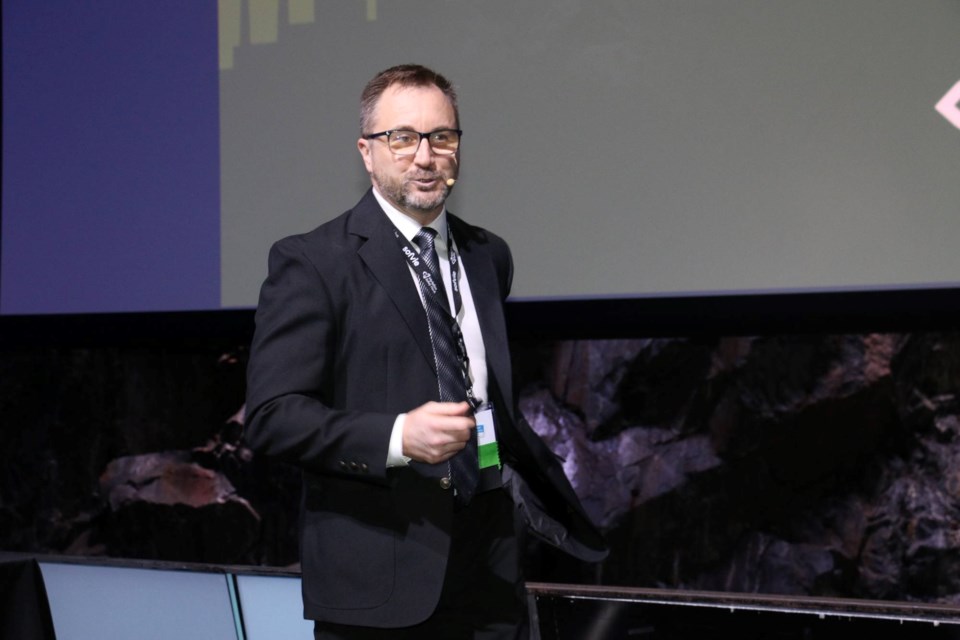In 2002, Mike Parent had recently arrived in Sudbury to work in the mining industry when he was sent by his supervisor to install ventilation underground.
Eager to impress the boss and learn some new skills, Parent was partnered with a more experienced worker, and the two went to the site to get started. The partner operated the scooptram (a kind of front-end loader), while Parent climbed up into the bucket ready to start work.
Even though he knew a fall arrest lanyard was in the cab of the vehicle, and policy at the time was to attach it before starting any work, Parent carried on anyway, without any safety measures to protect him should he fall from the bucket.
Nothing like that would be acceptable now, Parent said, and looking back, he calls it “foolishness,” because he violated a rule and put his own wellbeing at risk.
“That moment, as I became a health and safety professional, I had to ponder, ‘Why did I not tie off?’ Because no one else did,” said Parent, a former paramedic, mine rescue volunteer, and health and safety manager. Parent is also a City of Greater Sudbury councillor.
“That’s how powerful culture is.”
Parent, the president and CEO at Workplace Safety North (WSN), shared the story as the opening speaker during WSN’s 27th annual Mining Health and Safety Conference, taking place April 30 and May 1 at Science North in Sudbury.
Themed ‘The Foundation of Mining Safety,’ this year’s conference will feature presentations focused on the essentials of health and safety, while emphasizing the importance of legal requirements, risk management, and workplace culture, ensuring safe and healthy work environments.
Parent noted that Ontario’s mining sector today is flourishing.
There are 36 active mines and 30 significant exploration projects taking place across Ontario. In 2023, the sector produced $15.7 billion worth of minerals, including $6.4 billion of critical minerals at nine mines, he said.
Indigenous participation in the industry is growing as well, Parent noted — it’s currently 12 per cent, which is higher than in the general workforce.
Overall, the industry supports around 22,000 direct jobs, and another 130,000 indirect jobs, all of which are well-paying.
It’s important that health and safety be a priority at mine operations, Parent said, and WSN has worked closely with the industry over the last decade to define three pillars of culture.
Firstly is a commitment from leadership to set the tone of the workplace, he said, and they need to “walk the talk.”
“What you need is your most senior leadership knowing they're holding the weight of the organization,” Parent said.
“And they [go] to work every day knowing that everybody above them is depending on them to send the right message, to have the right tools to make sure the right policies and programs are in place to protect the workforce, and they need to do that by engaging with who? The workers.”
Employee engagement is the second pillar, he said.
It’s not just about communication or participation, which Parent called a minimum commitment. And it’s not about introducing a bunch of rules and expecting compliance.
It’s about talking to workers about how they do their job and putting in place a plan for risk management, which is the third pillar.
“If we know how you do your job, and you share with us and we agree on what it takes to do that job safely …, we work together on that, and then we use that information to influence our policies and our procedures and our checklists, we have more of agreement where we're not we're following rules. We're following controls.”

Over the last year, WSN has developed new programs and initiatives to boost its expertise in health and safety in response to industry need, Parent said.
That includes refresher training for mining supervisors, mental health training and consulting, ground control audits and custom training, training and consulting in occupational health and industrial hygiene, custom culture/system/compliance audits, and a new and improved mining supervisor common core course.
WSN also operates Ontario Mine Rescue, a network of volunteer miners at operations across the province that are called on to help during underground emergencies.
In the last year, volunteers have received new high-level training in hazmat confined spaces, and the surface rescue firefight pilot course and the equipment technician course.
The organization has also invested in some new equipment, including Skylotec Ascenders, a motor-driven hoist system that can lift people faster and more easily.
“Now that's a result of an incident that happened here in Sudbury where we had to use conventional rope rescue,” Parent said. “Had we had these, it would have expedited the rescue. So now we have these in our fleet of equipment.”
WSN is a not-for-profit health and safety association funded by the provincial government to provide approved health and safety training and services to the mining and forest products industries. It has offices in Sudbury and North Bay.




